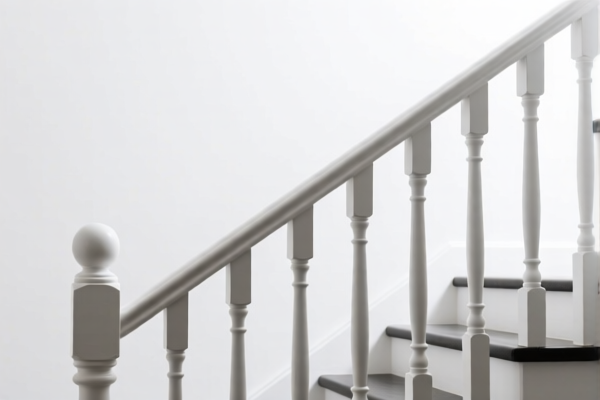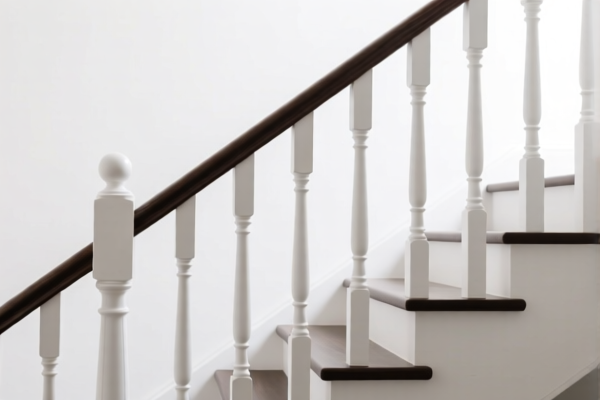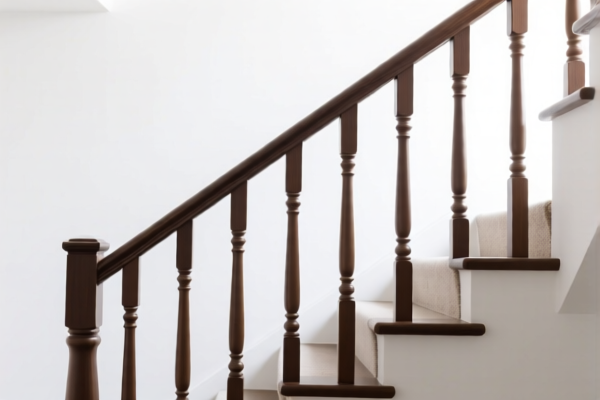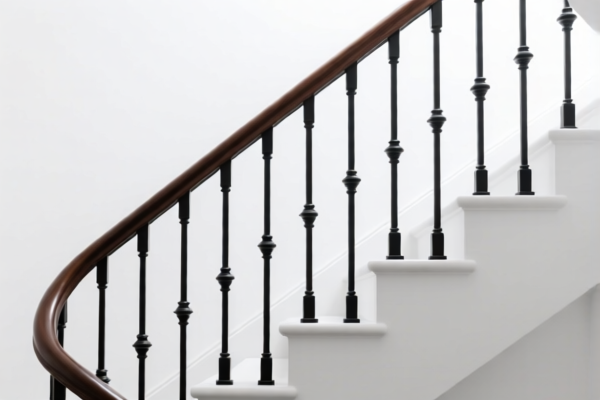| HS Code | Official Doc | Tariff Rate | Origin | Destination | Effective Date |
|---|---|---|---|---|---|
| 7308305050 | Doc | 80.0% | CN | US | 2025-05-12 |
| 7308906000 | Doc | 80.0% | CN | US | 2025-05-12 |
| 9403608093 | Doc | 55.0% | CN | US | 2025-05-12 |
| 9403910080 | Doc | 55.0% | CN | US | 2025-05-12 |




Railings
Railings are a structural element designed primarily to provide safety and guidance, preventing falls and offering support. They are commonly found in a variety of locations, both indoors and outdoors.
Material
Railings are constructed from a diverse range of materials, each offering different aesthetic and functional properties:
- Wood: Traditional and aesthetically versatile, often used in residential settings. Requires regular maintenance to prevent rot and weathering. Common wood types include pressure-treated pine, cedar, redwood, and hardwoods like oak and maple.
- Metal: Provides strength and durability. Common metals include:
- Steel: Offers high strength and is often powder-coated for corrosion resistance.
- Aluminum: Lightweight, corrosion-resistant, and requires minimal maintenance.
- Wrought Iron: Decorative and strong, often used for ornamental railings.
- Stainless Steel: Highly corrosion-resistant, often used in marine environments or modern designs.
- Composite: A blend of wood fibers and plastic, offering the look of wood with reduced maintenance. Resistant to rot, decay, and insects.
- Vinyl: A plastic material, durable, low-maintenance, and resistant to weathering.
- Glass: Provides unobstructed views, often used in modern designs. Typically tempered or laminated for safety.
- Concrete: Durable and strong, often used in public spaces or for architectural designs.
Purpose
- Safety: The primary function is to prevent falls from elevated surfaces like balconies, stairs, decks, and walkways.
- Support: Provides a handhold for stability and assistance while navigating stairs or ramps.
- Guidance: Directs pedestrian traffic and defines pathways.
- Aesthetic: Contributes to the overall design and appearance of a structure.
- Code Compliance: Often required by building codes to meet specific safety standards.
Function
Railings function by creating a physical barrier, preventing individuals from accidentally falling or stepping into hazardous areas. They distribute force in the event of a fall, reducing the risk of injury. The height and spacing of balusters (vertical posts) are critical for preventing individuals from slipping through or climbing over.
Usage Scenarios
- Staircases: Essential for safety on both indoor and outdoor stairs.
- Balconies: Prevents falls from elevated balconies.
- Decks: Provides safety around raised decks.
- Walkways: Defines pathways and prevents falls along elevated walkways or near drop-offs.
- Ramps: Provides support and guidance for individuals using ramps.
- Gardens & Landscaping: Used around retaining walls or elevated garden features.
- Pool Areas: Provides safety around swimming pools.
- Commercial Buildings: Used in public spaces to ensure safety and code compliance.
Common Types
- Stair Railings: Designed specifically for stairs, often with a handrail that slopes along the staircase.
- Balcony Railings: Typically enclose the perimeter of a balcony.
- Deck Railings: Similar to balcony railings, designed for decks.
- Guardrails: A broader term encompassing railings used in various applications, often found in commercial or industrial settings.
- Handrails: The portion of the railing designed to be gripped by the hand. Can be integrated into a railing system or installed separately.
- Cable Railings: Utilize stainless steel cables as infill, providing a modern, minimalist aesthetic.
- Glass Railings: Utilize glass panels as infill, offering unobstructed views.
- Picket Railings: Utilize vertical balusters (pickets) as infill.
- Rope Railings: Utilize rope as infill, often used in nautical or rustic designs.
Railings fall under structures and parts of structures of iron or steel. Here's a breakdown of relevant HS codes based on the provided information:
- 7308305050: This HS code covers structures (excluding prefabricated buildings of heading 9406) and parts of structures of iron or steel; specifically, doors, windows and their frames and thresholds for doors. While railings aren't explicitly listed, they can be considered as parts of structures, particularly if integrated into a building's design. The tax rate details indicate a base tariff of 0.0%, an additional tariff of 25.0%, and a 30% additional tariff after April 2, 2025, plus a 25% additional tariff on steel and aluminum products, resulting in a total tax rate of 80.0%.
- 7308906000: This HS code encompasses other structures and parts of structures of iron or steel. This is a broader category that includes columns, pillars, posts, beams, girders, and similar structural units. Railings could fall under this classification if they function as structural components. The tax rate details are the same as 7308305050: a base tariff of 0.0%, an additional tariff of 25.0%, a 30% additional tariff after April 2, 2025, plus a 25% additional tariff on steel and aluminum products, resulting in a total tax rate of 80.0%.
Important Considerations:
The classification between 7308305050 and 7308906000 depends on whether the railings are considered integral parts of doors or windows (7308305050) or stand-alone structural components (7308906000).
Please note that both HS codes are subject to a 25% additional tariff on steel and aluminum products, and this will increase to 30% after April 2, 2025. The total tax rate for both codes is 80.0%.
Customer Reviews
No reviews yet.